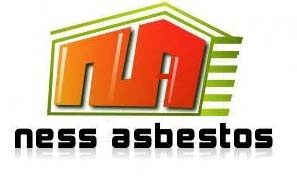The asbestos survey is an essential part of the management of any asbestos materials within buildings. However, it is essential that this is supported by an initial review to determine the need and extent of any asbestos survey.
Not all properties need surveying, but all commercial properties and common parts of dwellings will need an asbestos management plan.
Where our initial asbestos risk assessments indicate asbestos may be present within buildings, Ness Asbestos can perform asbestos surveys (also known as asbestos inspections). Our experience has allowed us to design specific templates and methodologies to establish what asbestos is present in different properties and buildings, and how these materials are best managed.
The Heath and Safety Executive (HSE) is now placing specific obligations upon clients to ensure that those employed for the performance of asbestos surveys are competent and as such Ness Asbestos meets these requirements. Many licensed asbestos removal contractors are not approved to these standards, as are indeed many of the organisations advertising asbestos surveying services on web search engines.
Where asbestos materials are found, we are able to help prioritise the risk and recommend appropriate actions, where necessary, by using a carefully designed survey structure and logically selected criteria. The end result will be reliable data. This data can then be used for the projection of forward maintenance costs, management processes, or the development of asbestos remediation programmes.
We are not an asbestos removal company and hence our advice will be based upon the needs of you the client, not the desire to remove the asbestos for commercial gain.
The two main types of survey are Management Surveys and Refurbishment & Demolition Surveys
Management Surveys
A management survey is the standard survey and the one that all commercial buildings must have by law under The Control of Asbestos Regulations 2012. They came into force on 6 April 2012 and a survey is often asked for by insurance companies and by mortgage lenders for private homes.
Its purpose is to locate, as far as reasonably practicable, the presence and extent of any suspect asbestos containing material (ACM) in the building which could be damaged or disturbed during normal occupancy, including foreseeable maintenance and installation, and to assess their condition.
Management surveys will often involve minor intrusive building material sampling. The extent of intrusion will vary between premises and depend on what is reasonably practicable for individual properties, i.e. it will depend on factors such as the type of building, the nature of construction, accessibility etc. A management survey should include an assessment of the condition of the various ACMs and their ability to release fibres into the air if they are disturbed accidentally in some way.
Any samples collected are then sent for analysis in a UKAS accredited laboratory which will confirm the presence or absence of ACMs.
However a management survey can also involve presuming the presence or absence of asbestos. This can be the cheapest form of survey in the short term. This type of survey may however categorise non-asbestos materials as containing asbestos and you can incur unnecessary costs for managing that material. Any materials presumed to contain asbestos must also have their condition assessed. A management survey can be completed using a combination of sampling ACMs and presuming ACMs.
Refurbishment & Demolition Surveys
This type of survey is to be carried out when a commercial building or residential property is to be demolished or when a major redevelopment is carried out. The guidance introduced in HSG264 has gone some way to addressing the issues associated with these surveys in that such surveys should only be undertaken when premises are vacant. The survey should focus on the client’s requirements and the surveyor should be in possession of the client’s development plans.
It is important to note that this type of survey will assess the type and volume of asbestos containing materials (ACM’s) and that in doing this, some building disruption will be involved in order to gain access to the samples.
The guidance suggests that this type of survey will provide sufficient information to formulate an asbestos tender document, however we would strongly recommend that additional information be included in any tender documentation to safeguard against additional costs.
For those clients unfamiliar with this type of work we would suggest you contact us for assistance with project management. Importantly the survey is only necessary for the part of a building that is being refurbished, so one floor may be surveyed while the others remain undisturbed; however the survey needs to be appropriate for the type of refurbishment / demolition being undertaken.
